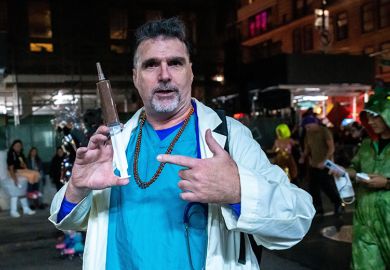Plans to regenerate the neglected field of heritage science offer funding opportunities for arts and humanities researchers as well as scientists - as long as they are willing to work together.
That is the message from the Arts and Humanities Research Council, which has launched an £8 million, five-year research programme in collaboration with the Engineering and Physical Sciences Research Council.
The programme is directed at better maintaining and understanding the myriad artworks, artefacts and places that make up our cultural heritage.
"We are talking about the totality of what we perceive to be cultural assets," said May Cassar, a professor of sustainable heritage at University College London who is leading the new Science and Heritage Research Programme.
"From paintings in galleries, to furniture in historic houses, to archaeological sites and cultural landscapes, we are interested in ensuring that they are in better shape for the future."
The programme is a response to a damning report by the House of Lords Science and Technology Committee, which concluded in November 2006 that a decline in the discipline of heritage science - the wide field of scientific activity that can benefit the heritage sector - was threatening the UK's cultural legacy.
The committee criticised government indifference to the discipline and the prevailing sense that it was neither science nor art. It recommended that the AHRC take the lead among research councils and bring forward a "time-limited directed programme of research in heritage science" both to regenerate the area and to attract younger scientists to the field. "The area of research ... has been re-energised by the attention," explained Professor Cassar.
There are two strands under the new programme, which is half funded by the AHRC and half by the EPSRC, she said.
The first strand is aimed at building capacity within the sector to undertake research. This means bringing researchers together, both across institutions including universities, museums and galleries and across the arts-science divide between art historians, conservators physicists and technologists. Collectively, it is hoped, they can look at where the opportunities lie.
The second strand will fund some of the collaborative projects these networks propose. The overall aim is to ensure that Britain's cultural heritage becomes better able to withstand the pressures of 21st-century life due to increased wear and tear from cultural tourism to the effects of climate change.
"How do old walls take up moisture? How will climate change alter how materials respond to the environment? We need to fund high-quality research to be able to answer some of those questions," Professor Cassar said.
She stressed that the focus would be "whole object" research that looks at the meaning a particular piece of cultural heritage has to the public, along with its history and use.
So far, a call for PhD studentships has been issued in support of training for young researchers in the programme. A panel will meet next month to decide recipients for September.
A second call to fund networks of academics to come together and develop research proposals is due to be issued. It will be followed in 2009 with the first collaborative research awards.
"This year will focus on building up the networks in preparation for a rolling programme of research announcements next year," said Professor Cassar.
She stressed the importance of the arts and science coming together in the field. "At the moment you have quite a lot of scientists saying, 'I've got my tool; let's see how I can use it in the cultural heritage field'. But wouldn't it be more challenging and interesting if (historians) could come up with questions that we could try the tools on to answer?"
She added that the programme was also an opportunity to bring heritage science to fruition as a discipline in its own right. "Currently we still have these individual disciplines learning how to do research together but, who knows, in five years we may have a new hybrid."
That the area is blooming is also recognised by the Technology Strategy Board, which funds business research and development collaborations, including those with academics. It launched a £10 million call last month for "gathering data in complex environments", which included cultural heritage as an area it would be funding.
David Saunders, head of the department of conservation at the British Museum, welcomed the new programme and said he was looking forward to working with university partners.
"[The area] has always suffered somewhat from falling through he cracks of the research councils. As a sector, we have to show we can make good use of the funding ... If it just turned out to be one programme and nothing ever happened again, it would be tragic," Dr Saunders said.
Register to continue
Why register?
- Registration is free and only takes a moment
- Once registered, you can read 3 articles a month
- Sign up for our newsletter
Subscribe
Or subscribe for unlimited access to:
- Unlimited access to news, views, insights & reviews
- Digital editions
- Digital access to THE’s university and college rankings analysis
Already registered or a current subscriber?



